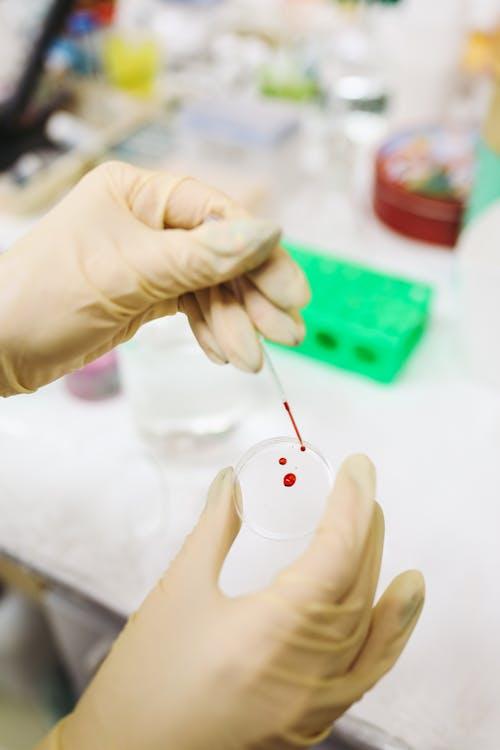Blood disorders affect millions of people worldwide, impacting the normal functions of blood and posing significant health risks. The human blood comprises red blood cells (RBCs), white blood cells (WBCs), platelets, and plasma, each playing a vital role in maintaining overall health. Any disruption in their production, structure, or function can lead to serious medical conditions.
Among the most common blood disorders are leukemia, hemophilia, and anemia, each presenting unique symptoms and requiring specific treatment approaches. This article explores these disorders in-depth, highlighting their causes, symptoms, and available treatment options. If you’re dealing with a health issue and need an online doctor’s note for work or school, it’s important to ensure you get the proper documentation for your condition. Understanding these conditions can help with early detection, management, and improving patient outcomes.
Leukemia: The Cancer of Blood-Forming Tissues
Leukemia is a type of blood cancer that originates in the bone marrow and lymphatic system. It causes the overproduction of abnormal white blood cells, which crowd out healthy blood cells, leading to various complications. These abnormal cells impair the body’s ability to fight infections and disrupt normal blood functions.
Types of Leukemia

Leukemia is categorized based on how quickly the disease progresses and which blood cells are affected:
- Acute Leukemia
Acute leukemia develops rapidly and requires immediate treatment. It is characterized by an excess of immature blood cells that multiply uncontrollably. The two main types include:
- Acute Lymphocytic Leukemia (ALL):This type primarily affects children but can also occur in adults.
- Acute Myeloid Leukemia (AML):Common in adults but also seen in children and adolescents.
- Chronic Leukemia
Chronic leukemia progresses more slowly and allows for the accumulation of more mature but abnormal blood cells. The two main types include:
- Chronic Lymphocytic Leukemia (CLL):Typically affects older adults and may not require immediate treatment.
- Chronic Myeloid Leukemia (CML):Occurs mainly in adults and progresses through different phases.
Causes and Risk Factors
Although the exact cause of leukemia is unknown, certain factors increase the risk:
- Genetic mutationsthat cause uncontrolled cell growth.
- Radiation exposurefrom cancer treatments or nuclear accidents.
- Chemical exposure, such as benzene in industrial environments.
- Family history of leukemia, indicating a genetic predisposition.
- Smoking, which increases the risk of AML.
- Previous cancer treatments, including chemotherapy and radiation therapy, which may increase leukemia risk.
Symptoms of Leukemia
Leukemia symptoms vary depending on the type and stage but often include:
- Persistent fatigue and weaknessdue to anemia.
- Frequent infectionscaused by compromised immune function.
- Unexplained weight loss and loss of appetite.
- Swollen lymph nodesin the neck, armpits, or groin.
- Easy bruising and excessive bleedingdue to low platelet count.
- Bone and joint paincaused by the accumulation of leukemia cells in the marrow.
- Fever and night sweats, common in more advanced stages.
- Shortness of breath, especially if leukemia has affected red blood cell production.

Diagnosis of Leukemia
To diagnose leukemia, doctors use a variety of tests, including:
- Blood Tests:A complete blood count (CBC) can detect abnormal levels of white blood cells, red blood cells, and platelets.
- Bone Marrow Biopsy:A sample of bone marrow is taken to identify the presence of leukemia cells.
- Cytogenetic Analysis:Examines changes in chromosomes within leukemia cells to help classify the leukemia type.
- Flow Cytometry:Identifies specific leukemia cell markers to determine the type and subtype of leukemia.
- Lumbar Puncture (Spinal Tap):Checks for leukemia spread in the cerebrospinal fluid around the brain and spinal cord.
- Imaging Tests:CT scans, MRIs, and X-rays help assess whether leukemia has spread to organs like the liver, spleen, or lymph nodes.

Treatment Options
Treatment strategies for leukemia depend on its type, stage, and patient health. Common treatment options include:
- Chemotherapy:The primary treatment for leukemia, using drugs to kill cancerous cells.
- Radiation Therapy:High-energy radiation targets leukemia cells in the bone marrow.
- Targeted Therapy:Uses drugs that specifically attack leukemia cells without harming normal cells.
- Bone Marrow Transplant (Stem Cell Transplant):Replaces diseased bone marrow with healthy stem cells.
- Immunotherapy:Boosts the immune system to recognize and destroy leukemia cells.
- CAR-T Cell Therapy:A cutting-edge treatment that modifies a patient’s immune cells to target leukemia cells.
Living with Leukemia
A leukemia diagnosis can be life-altering, but managing the disease effectively can improve quality of life. If you need a legit doctor’s note online to cover medical appointments or recovery time, we provide reliable and professional documentation to help you manage your absence. Here are some key aspects of living with leukemia:
- Emotional and Psychological Support
Coping with leukemia can be emotionally challenging. Patients and their families may benefit from:
- Counseling and therapy to manage stress and anxiety.
- Support groups to connect with others facing similar challenges.
- Mindfulness practices like meditation and yoga to reduce stress.
- Nutrition and Diet
A balanced diet is essential to support immune function and overall health. Recommended dietary choices include:
- High-protein foods like lean meats, fish, eggs, and legumes to maintain strength.
- Fruits and vegetables rich in antioxidants to support immune health.
- Whole grains to provide sustained energy levels.
- Plenty of fluids to stay hydrated and support kidney function.
- Exercise and Physical Activity
While fatigue is common in leukemia patients, moderate physical activity can help:
- Improve energy levels and reduce fatigue.
- Enhance mood through the release of endorphins.
- Maintain muscle strength and overall physical health.
- Managing Treatment Side Effects
Leukemia treatments often come with side effects, which can be managed through:
- Medications to relieve nausea, pain, and infections.
- Rest and hydration to counteract fatigue.
- Regular checkups to monitor progress and adjust treatments as needed.
Advances in Leukemia Research
Ongoing research is paving the way for more effective leukemia treatments. Some recent advancements include:
- Genetic and molecular research identifying specific mutations that can be targeted with personalized therapies.
- CAR-T cell therapy, a revolutionary treatment that reprograms immune cells to attack cancer cells.
- New targeted drugs that disrupt leukemia cell growth without harming normal cells.
- Immunotherapy advancements, helping the body’s immune system better recognize and fight leukemia cells.
Prevention and Early Detection
Although leukemia cannot always be prevented, some steps may help reduce risk:
- Avoiding exposure to harmful chemicals like benzene and pesticides.
- Not smoking, as tobacco use has been linked to some leukemia types.
- Maintaining a healthy lifestyle, including regular exercise and a nutritious diet.
- Routine medical checkups, especially for individuals with a family history of leukemia.
Leukemia is a complex and potentially life-threatening disease but advances in medical research and treatment options have improved outcomes for many patients. Early diagnosis and timely treatment can significantly impact survival rates and quality of life. By staying informed and proactive about health, individuals can better manage leukemia and its challenges. For those requiring time off, dr excuses online are available to help ensure your absence is properly documented. Additionally, if you qualify for medical leave, obtaining Online FMLA certification can provide the necessary legal backing for your time away.
Hemophilia: The Bleeding Disorder
Hemophilia is a genetic disorder in which the blood does not clot properly due to the lack of essential clotting factors. This condition primarily affects males, though females can be carriers and may also experience mild symptoms. Without proper treatment, hemophilia can lead to severe bleeding episodes, joint damage, and life-threatening complications. If you’re managing hemophilia, consider taking medical certificate for leave to take time off for treatment or recovery.
Types of Hemophilia
The severity and classification of hemophilia depend on the missing clotting factor. The two main types of hemophilia include:
- Hemophilia A:The most common type, caused by a deficiency of clotting factor VIII. It accounts for about 80% of all hemophilia cases.
- Hemophilia B:Also known as Christmas disease, this type results from a deficiency of clotting factor IX. It is less common than Hemophilia A but has similar symptoms and treatment approaches.

Additionally, hemophilia is categorized into mild, moderate, or severe based on the level of clotting factor present in the blood:
- Mild Hemophilia:Clotting factor levels range from 5% to 40% of normal. People with mild hemophilia may experience prolonged bleeding only after surgeries or major injuries.
- Moderate Hemophilia:Clotting factor levels range from 1% to 5% of normal. People with moderate hemophilia may have occasional spontaneous bleeding and prolonged bleeding after minor injuries.
- Severe Hemophilia:Clotting factor levels are less than 1% of normal. Individuals with severe hemophilia experience frequent spontaneous bleeding episodes, often into joints and muscles.
Causes and Risk Factors
Hemophilia is typically an inherited disorder, passed down through X-linked recessive genes. The gene responsible for producing clotting factors is located on the X chromosome. Since males have only one X chromosome (XY), inheriting a defective gene results in hemophilia. Females, having two X chromosomes (XX), can be carriers and may have mild symptoms if one gene is affected. If you need to take time off for treatment, you can buy a doctor’s note online to ensure your medical absence is properly documented. In rare cases, hemophilia can also be acquired. Acquired hemophilia occurs when the immune system produces antibodies that attack clotting factors, leading to excessive bleeding. This condition is often associated with autoimmune diseases, cancer, pregnancy, or adverse drug reactions.
Risk factors for hemophilia include:
- Family history of hemophilia.
- Having a parent who is a carrier of the defective gene.
- Certain medical conditions that can lead to acquired hemophilia.
Symptoms of Hemophilia
Symptoms vary based on the severity of the disorder. Some individuals may not show noticeable symptoms until a significant injury occurs, while others experience frequent bleeding episodes. If you need a quick solution, you can find a cheap doctor’s note online to cover your medical absences. Common symptoms include:
- Prolonged bleeding:Even minor cuts or injuries can result in excessive and prolonged bleeding.
- Spontaneous bleeding:Internal bleeding into joints and muscles can occur without any apparent injury, leading to pain and swelling.
- Frequent nosebleeds:Nosebleeds that are difficult to stop may be a sign of hemophilia.
- Excessive gum bleeding:Simple dental procedures or brushing teeth too hard can cause prolonged bleeding.
- Blood in urine or stool:This may indicate internal bleeding in the digestive or urinary tract.
- Joint damage and arthritis:Repeated internal bleeding into joints can lead to chronic pain, stiffness, and deformities over time.
Diagnosis of Hemophilia
Hemophilia is diagnosed through a series of laboratory tests that measure blood clotting ability and factor levels. Diagnostic procedures include:
- Blood tests:These tests determine clotting time and measure levels of clotting factors VIII and IX.
- Genetic testing:Identifies mutations in the F8 or F9 gene, confirming hemophilia and determining whether a person is a carrier.
- Prenatal testing:For families with a history of hemophilia, prenatal tests such as amniocentesis or chorionic villus sampling (CVS) can determine whether a fetus has inherited the disorder.

Treatment Approaches
Although there is no cure, hemophilia can be managed through various treatments that help prevent and control bleeding episodes. Treatment strategies include:
- Replacement Therapy:The most common treatment for hemophilia involves infusions of clotting factor VIII (for hemophilia A) or clotting factor IX (for hemophilia B). These infusions can be given:
- On-demand, to treat active bleeding episodes.
- Prophylactically, to prevent spontaneous bleeding in individuals with severe hemophilia.
- Desmopressin (DDAVP):This synthetic hormone stimulates the release of stored clotting factor VIII and is used in mild hemophilia A cases.
- Gene Therapy:A developing treatment aimed at correcting the genetic defect responsible for hemophilia. Early trials have shown promising results in increasing clotting factor production.
- Physical Therapy:Helps maintain joint function, reduce stiffness, and prevent complications from repeated joint bleeds.
- Antifibrinolytic Medications:Drugs such as aminocaproic acid and tranexamic acid help prevent clots from breaking down too quickly, reducing bleeding risk.
- Pain Management:Joint bleeds can be painful, and nonsteroidal anti-inflammatory drugs (NSAIDs) should be used with caution. Acetaminophen is preferred for pain relief.
Living with Hemophilia
With proper care and lifestyle adjustments, individuals with hemophilia can lead active and fulfilling lives. Key considerations include:
- Regular Medical Checkups:Routine visits to a hematologist help monitor clotting factor levels and joint health.
- Avoiding Contact Sports:Activities such as football, wrestling, and hockey can lead to serious injuries. Low-impact exercises like swimming, cycling, and walking are recommended.
- Immediate Treatment for Bleeding Episodes:Prompt administration of clotting factors helps minimize complications.
- Dental Care Precautions:Informing dentists about hemophilia before procedures ensures proper care to prevent excessive bleeding.
- Wearing Medical Alert Identification:In emergencies, medical alert bracelets or necklaces provide crucial information to healthcare providers.
Advancements in Hemophilia Research
Research in hemophilia treatment is continuously evolving, with promising advancements in gene therapy and novel clotting factor products. Some of the latest developments include:
- Longer-acting clotting factor treatmentsthat require fewer infusions.
- Non-factor therapiesthat mimic clotting factor function without replacement therapy.
- CRISPR gene editing technology, which may provide a permanent cure for hemophilia in the future.
Hemophilia, though a lifelong condition, can be effectively managed with medical treatments and lifestyle modifications. Advances in research continue to improve the quality of life for those with the disorder. Early diagnosis, preventive care, and proper treatment can help individuals with hemophilia live full and active lives. Additionally, you can get a real doctor’s note online to avoid any disruption at work or school. Working closely with healthcare professionals and staying informed about treatment options is essential.
Anemia: The Deficiency of Red Blood Cells
Anemia occurs when there is a deficiency of red blood cells or hemoglobin, leading to reduced oxygen transport to the body’s tissues. If you need to take time off for treatment or recovery, you can get a doctor’s note for work online to ensure your absence is properly documented. It is a common blood disorder with multiple underlying causes.

Types of Anemia
Iron-Deficiency Anemia
This is the most prevalent form of anemia and occurs due to insufficient iron intake or absorption. Iron is essential for producing hemoglobin, the protein in red blood cells that carries oxygen. Causes include poor diet, heavy menstrual bleeding, gastrointestinal bleeding, or conditions that impair iron absorption, such as celiac disease.
Vitamin Deficiency Anemia
This type of anemia results from a lack of vitamin B12 or folate, both of which are necessary for RBC production. Poor dietary intake, malabsorption issues, and certain medications can contribute to vitamin deficiency anemia. Individuals following a strict vegan diet may be at higher risk due to the absence of B12-rich animal products.
Aplastic Anemia
A rare but serious condition, aplastic anemia occurs when the bone marrow fails to produce enough blood cells. This can result from autoimmune diseases, exposure to toxic chemicals, certain medications, or viral infections. In severe cases, it can lead to life-threatening complications.
Sickle Cell Anemia
Sickle cell anemia is a genetic disorder that causes red blood cells to become abnormally shaped like crescents or sickles. These misshapen cells can block blood flow, causing pain, organ damage, and increased risk of infections. This condition is more prevalent among individuals of African, Mediterranean, Middle Eastern, and Indian descent.
Hemolytic Anemia
Hemolytic anemia occurs when red blood cells are destroyed faster than they are produced. It can be inherited or acquired due to infections, autoimmune diseases, exposure to certain medications, or blood transfusion reactions.
Causes and Risk Factors
Anemia can develop due to various factors, including:
- Nutritional Deficiencies: A lack of essential nutrients like iron, folate, and vitamin B12 impairs RBC production.
- Chronic Diseases: Conditions such as kidney disease, cancer, and inflammatory disorders can interfere with RBC production.
- Genetic Disorders: Conditions like sickle cell anemia and thalassemia are inherited and affect hemoglobin production or RBC lifespan.
- Blood Loss: Heavy menstrual periods, surgery, trauma, or internal bleeding from ulcers and gastrointestinal conditions can lead to anemia.
- Medications and Toxins: Some medications, such as chemotherapy drugs, can suppress bone marrow function, while exposure to toxic chemicals can damage blood cells.
Symptoms of Anemia
Anemia symptoms can vary depending on severity and type, but common signs include:
- Persistent Fatigue and Weakness: Reduced oxygen supply to tissues leads to decreased energy levels.
- Pale Skin and Shortness of Breath: The lack of healthy RBCs affects oxygen circulation, making breathing difficult.
- Dizziness and Headaches: Low oxygen levels can cause lightheadedness, confusion, or fainting.
- Cold Hands and Feet: Poor circulation results in temperature regulation issues.
- Chest Pain and Irregular Heartbeat: Severe anemia can strain the heart, leading to palpitations, angina, or even heart failure.
Diagnosis of Anemia
Diagnosing anemia involves a combination of medical history, physical examination, and laboratory tests. Common diagnostic methods include:
- Complete Blood Count (CBC): Measures hemoglobin levels, hematocrit, and RBC count.
- Iron Studies: Evaluates serum iron, ferritin, and transferrin levels to determine iron deficiency.
- Vitamin B12 and Folate Tests: Assesses nutrient deficiencies contributing to anemia.
- Bone Marrow Biopsy: Used in cases of suspected aplastic anemia or bone marrow disorders.
- Hemoglobin Electrophoresis: Identifies genetic disorders like sickle cell anemia and thalassemia.

Treatment Options
The treatment for anemia depends on its underlying cause. Some common treatment approaches include:
- Iron Supplements: Used to replenish iron levels in iron-deficiency anemia. Dietary sources such as red meat, spinach, and legumes can also help.
- Vitamin B12 and Folate Supplementation: Injections or oral supplements are prescribed for vitamin deficiency anemia.
- Blood Transfusions: Necessary in severe cases of anemia where immediate RBC replenishment is required.
- Bone Marrow Transplants: Used in severe aplastic anemia or certain blood disorders.
- Medications: Drugs such as erythropoietin-stimulating agents (ESAs) help boost RBC production in patients with anemia due to chronic kidney disease.
Dietary and Lifestyle Management
Making lifestyle changes can help prevent and manage anemia effectively. Consider the following:
- Eat an Iron-Rich Diet: Include foods like lean meats, eggs, spinach, beans, and fortified cereals.
- Increase Vitamin C Intake: Vitamin C enhances iron absorption, so pair iron-rich foods with citrus fruits, bell peppers, and tomatoes.
- Monitor Vitamin B12 and Folate Levels: Consume dairy products, eggs, fish, and leafy greens.
- Stay Hydrated: Proper hydration supports blood circulation and overall health.
- Regular Check-Ups: Routine blood tests can help detect anemia early and prevent complications.
Complications of Untreated Anemia
If left untreated, anemia can lead to serious health consequences, including:
- Severe Fatigue: Chronic low oxygen levels affect daily activities and overall well-being.
- Heart Problems: Anemia increases the risk of heart failure and arrhythmias.
- Pregnancy Complications: Anemic pregnant women are at higher risk of preterm birth and low birth weight.
- Developmental Delays in Children: Iron deficiency in children can lead to cognitive and growth impairments.
Blood disorders, whether due to cancerous conditions like leukemia, genetic issues like hemophilia, or nutritional deficiencies causing anemia, require early detection and effective management. Advances in medical research continue to improve treatment options, offering hope for better patient outcomes. For those needing extended time off, obtaining Family medical leave certification can help secure your job while you focus on recovery.

Get the Doctor’s Note You Need, Fast and Easy!
If you or a loved one are dealing with a blood disorder, such as leukemia, hemophilia, or anemia, it’s crucial to get the right medical documentation to manage work, school, or other responsibilities.
At My Dr’s Note, we understand the impact that health conditions can have on your daily life. Whether you’re struggling with symptoms or undergoing treatment, obtaining the proper documentation is key to ensuring you get the time you need to focus on recovery.
Our service allows you to quickly and easily get a real doctor’s note online for work or school. No appointments are necessary, and you can buy a doctor’s note online in just a few simple steps. If you’re feeling unwell due to a blood disorder, don’t wait—get the documentation you need without the hassle of waiting for an appointment. Our online doctor’s note for work or school ensures that you’re able to rest without worrying about your responsibilities.
My Dr’s Note provides authentic doctor’s notes that are fully verifiable and HIPAA-compliant. We also offer online FMLA certification services for those needing family medical leave documentation. Focus on feeling better and let us handle the paperwork. Get started now and take control of your health with ease.


